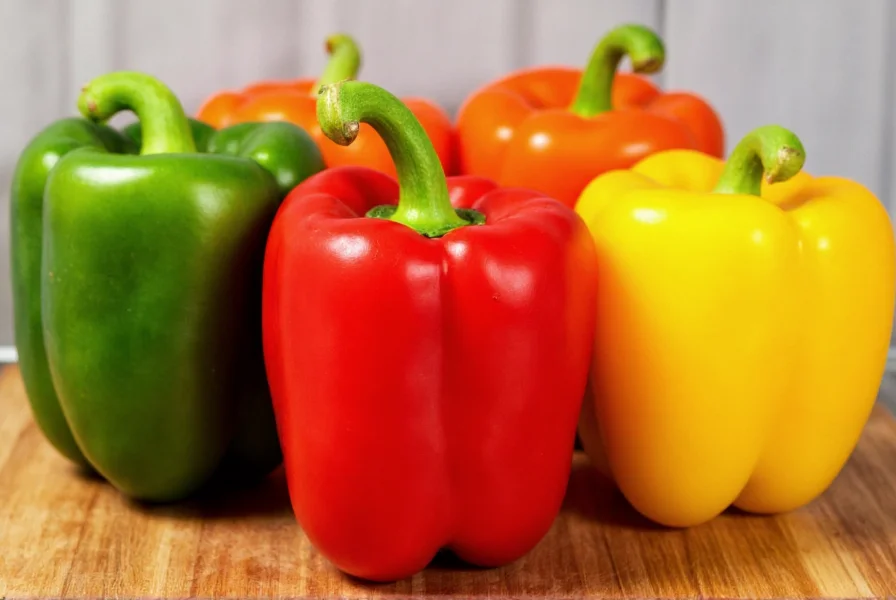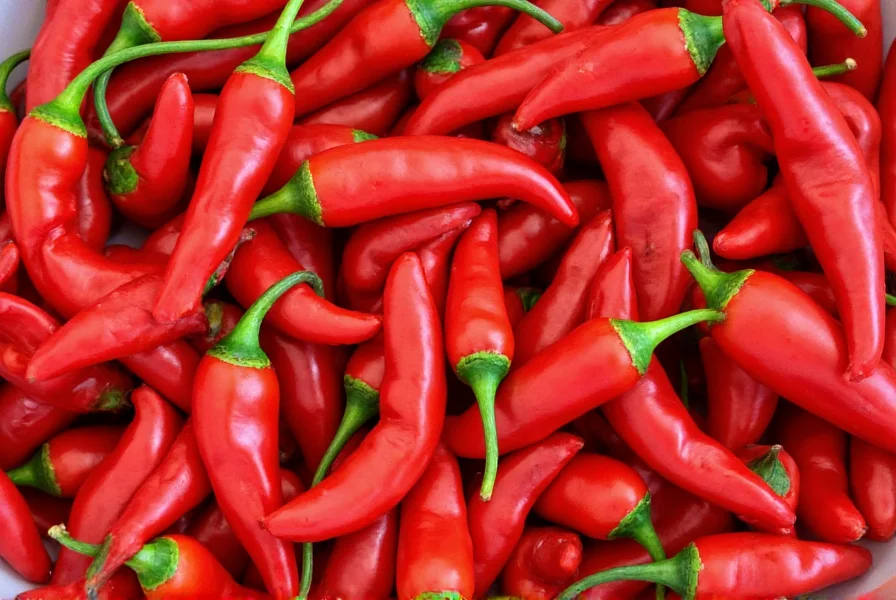Chili peppers transform ordinary dishes into extraordinary culinary experiences, but navigating the vast world of different kinds of chili peppers can overwhelm even experienced cooks. Understanding their characteristics helps you select the perfect pepper for any recipe while avoiding unexpected heat disasters. This comprehensive guide explores the most common chili varieties, their Scoville heat units, flavor profiles, and ideal culinary applications.
Understanding Chili Pepper Characteristics
Before exploring specific varieties, it's essential to understand the key characteristics that differentiate chili pepper types for cooking. Heat level, measured in Scoville Heat Units (SHU), represents capsaicin concentration. However, flavor complexity matters equally—many chilies offer fruity, smoky, or earthy notes beyond mere heat. Physical characteristics like shape, color, and thickness also affect their culinary uses.
Peppers develop varying heat levels based on growing conditions, with stressors like limited water increasing capsaicin production. The placenta (white ribs inside the pepper) contains the highest concentration of capsaicin, not the seeds as commonly believed. When handling extremely hot varieties, always wear gloves and avoid touching your face.
Most Common Chili Pepper Varieties
Bell Peppers (Capsicum annuum)
Starting our chili pepper identification guide with the mildest option, bell peppers register 0 SHU. Available in green, red, yellow, and orange varieties, they offer crisp texture and sweet flavor without heat. Green bells are harvested early, while colored varieties ripen longer, developing sweeter profiles. Ideal for stuffing, salads, stir-fries, and as colorful garnishes.

Jalapeño Peppers (Capsicum annuum)
With 2,500-8,000 SHU, jalapeños represent America's most popular mild chili peppers for beginners. These 2-3 inch peppers feature thick walls perfect for stuffing. Green jalapeños offer grassy notes, while red varieties develop fruitier flavors. Essential for salsas, nachos, poppers, and pickled preparations. Remove seeds and ribs to reduce heat significantly.
Serrano Peppers (Capsicum annuum)
At 10,000-23,000 SHU, serranos deliver twice the heat of jalapeños with brighter, more acidic flavor. These 1-2 inch tapered peppers work well raw in salsas, pico de gallo, and guacamole. Their thin walls make them less suitable for stuffing but excellent for quick-cooking applications. Available in green, red, orange, and yellow varieties.
Cayenne Peppers (Capsicum annuum)
Measuring 30,000-50,000 SHU, cayenne peppers provide consistent heat with subtle berry notes. These 6-inch slender red peppers commonly appear dried and ground as cayenne powder. Fresh cayennes enhance stir-fries, soups, and sauces. When harvesting, remember that fully red peppers contain more capsaicin than green varieties.
Habanero Peppers (Capsicum chinense)
At 100,000-350,000 SHU, habaneros rank among the spiciest chili peppers in common use. Their distinctive lantern shape and tropical fruit aroma make them popular in Caribbean and Yucatan cuisine. Orange habaneros offer the classic profile, while varieties like Red Savina, Chocolate, and White Habanero provide different flavor nuances. Use sparingly in hot sauces, marinades, and fruit salsas.
Thai Bird's Eye Chilies (Capsicum annuum)
These tiny 1-2 inch peppers pack 50,000-100,000 SHU with intense, immediate heat. Common in Southeast Asian cuisine, they appear in green (less ripe) and red (fully ripe) varieties. Their thin walls and high yield make them ideal for curries, stir-fries, and dipping sauces. When handling, remember that their small size concentrates capsaicin, making them deceptively hot.
Poblano Peppers (Capsicum annuum)
Moderately hot at 1,000-2,000 SHU, poblanos feature large, heart-shaped bodies perfect for stuffing. When dried, they become ancho chilies with rich, raisin-like flavor. Fresh poblanos work well in chiles rellenos, mole sauces, and roasted vegetable dishes. Their thick walls withstand cooking better than thinner-skinned varieties.
| Chili Pepper Variety | Scoville Heat Units | Flavor Profile | Best Culinary Uses |
|---|---|---|---|
| Bell Pepper | 0 SHU | Sweet, crisp, vegetal | Salads, stuffing, stir-fries |
| Jalapeño | 2,500-8,000 SHU | Grassy, bright, slightly fruity | Salsas, nachos, poppers |
| Serrano | 10,000-23,000 SHU | Sharp, acidic, clean heat | Raw salsas, pico de gallo |
| Cayenne | 30,000-50,000 SHU | Earthy, berry notes | Stir-fries, soups, hot sauces |
| Habanero | 100,000-350,000 SHU | Tropical fruit, floral | Caribbean sauces, fruit salsas |
| Thai Bird's Eye | 50,000-100,000 SHU | Sharp, immediate heat | Curries, stir-fries, dipping sauces |
| Poblano | 1,000-2,000 SHU | Earthy, mild, slightly sweet | Chiles rellenos, mole, roasting |
Specialty and Superhot Varieties
Beyond common supermarket varieties, numerous specialty peppers cater to adventurous cooks. Scotch Bonnets (100,000-350,000 SHU) resemble habaneros but offer distinct tropical fruitiness essential in jerk seasoning. Ghost Peppers (855,000-1,041,427 SHU) deliver intense, lingering heat with smoky-sweet undertones popular in extreme hot sauces.
The current commercial spiciest chili peppers in the world include the Carolina Reaper (1.4-2.2 million SHU), Pepper X (3.18 million SHU), and Dragon's Breath (2.48 million SHU). These superhots require extreme caution—never handle without gloves, and use microscopic amounts in cooking. Many hot sauce competitions now feature these varieties, though culinary applications remain limited due to their overwhelming heat.
Choosing the Right Chili for Your Recipe
Selecting appropriate chili pepper varieties for cooking depends on multiple factors beyond heat level. Consider flavor compatibility—fruity habaneros complement mango salsa, while earthy poblanos enhance chocolate-based mole. Texture matters too: thick-walled peppers like bell peppers and poblanos withstand stuffing and roasting, while thin-skinned serranos work best raw.
When substituting peppers, maintain similar heat levels and flavor profiles. Replace jalapeños with serranos for more heat, or use poblano for milder applications. For dried pepper substitutions, remember that 1 teaspoon crushed red pepper equals approximately 1 fresh serrano pepper.
Handling and Safety Tips
Always wear gloves when handling hot peppers, especially superhots. Capsaicin transfers easily to skin and can cause severe irritation, particularly around eyes and mucous membranes. If exposed, use milk or oil to neutralize the burn—water spreads capsaicin rather than removing it.
When cooking with chilies, add them early for infused heat throughout the dish, or later for brighter, more distinct pepper flavor. Remember that cooking doesn't reduce capsaicin levels—heat distributes but doesn't eliminate it. Acidic ingredients like lime juice can help balance intense heat.
Storing and Preserving Chili Peppers
Refrigerate fresh peppers in perforated plastic bags for up to three weeks. For longer storage, freeze whole peppers on baking sheets before transferring to freezer bags—they'll remain usable for cooking (though texture changes) for up to a year. Drying remains the most traditional preservation method: string peppers on twine or use a food dehydrator until brittle.
Creating chili oil or vinegar preserves both flavor and heat. Simply steep cleaned peppers in heated oil (cooled before storage) or vinegar for several weeks. Always label preserved peppers clearly and store away from children. Remember that preserved peppers maintain their heat level—sometimes intensifying over time.
Conclusion
Navigating the diverse world of different types of chili peppers and their heat levels empowers you to create balanced, flavorful dishes. Start with milder varieties like poblanos or jalapeños to develop your palate before exploring habaneros and beyond. Remember that heat represents just one dimension—flavor complexity often matters more in creating memorable dishes. By understanding each variety's characteristics, you'll confidently select the perfect chili for any culinary creation.
Frequently Asked Questions
Which chili pepper is best for beginners?
Jalapeños make the best mild chili peppers for beginners with their manageable 2,500-8,000 SHU heat level and versatile flavor. Their thick walls withstand cooking well, and you can easily control heat by removing seeds and ribs. Poblano peppers (1,000-2,000 SHU) offer an even milder option with earthy flavor perfect for stuffing.
How can I reduce the heat of a chili pepper?
To reduce heat in different kinds of chili peppers, remove the white placenta (ribs) and seeds where capsaicin concentrates. Soaking sliced peppers in salt water or milk for 15-30 minutes can also extract some capsaicin. Cooking with acidic ingredients like lime juice or vinegar helps balance perceived heat. Remember that heat distribution becomes more even during cooking, but total capsaicin remains unchanged.
What's the difference between red and green chili peppers?
Color typically indicates ripeness rather than variety. Green peppers are harvested early with brighter, grassier flavors and slightly less heat. As they ripen to red, yellow, or orange, they develop sweeter, more complex flavors and often increase in heat. For example, red jalapeños are hotter and fruitier than green ones. Some varieties like habaneros come in multiple colors with distinct flavor profiles beyond just ripeness differences.
Which chili peppers are used in hot sauces?
Popular chili pepper varieties for cooking hot sauces include habaneros for tropical fruitiness (100,000-350,000 SHU), cayenne for consistent heat (30,000-50,000 SHU), and serranos for bright acidity (10,000-23,000 SHU). Superhot sauces often blend ghost peppers (855,000-1,041,427 SHU) or Carolina Reapers (1.4-2.2 million SHU) with milder peppers and vinegar for balance. Traditional Tabasco sauce uses Tabasco peppers (30,000-50,000 SHU).











 浙公网安备
33010002000092号
浙公网安备
33010002000092号 浙B2-20120091-4
浙B2-20120091-4